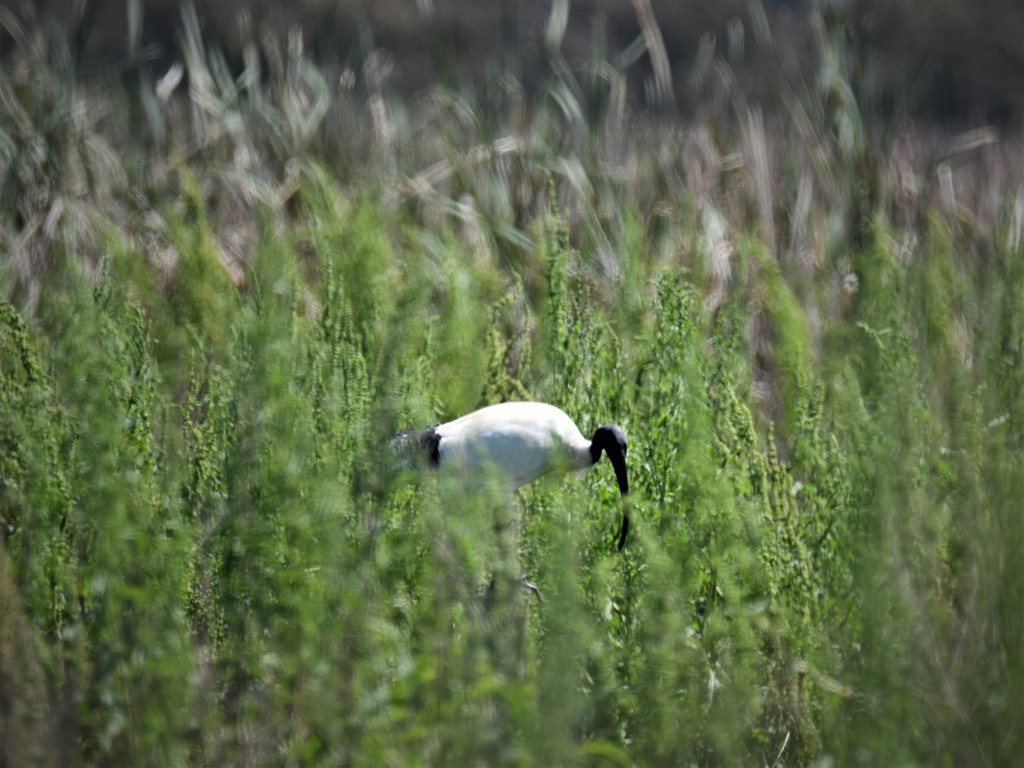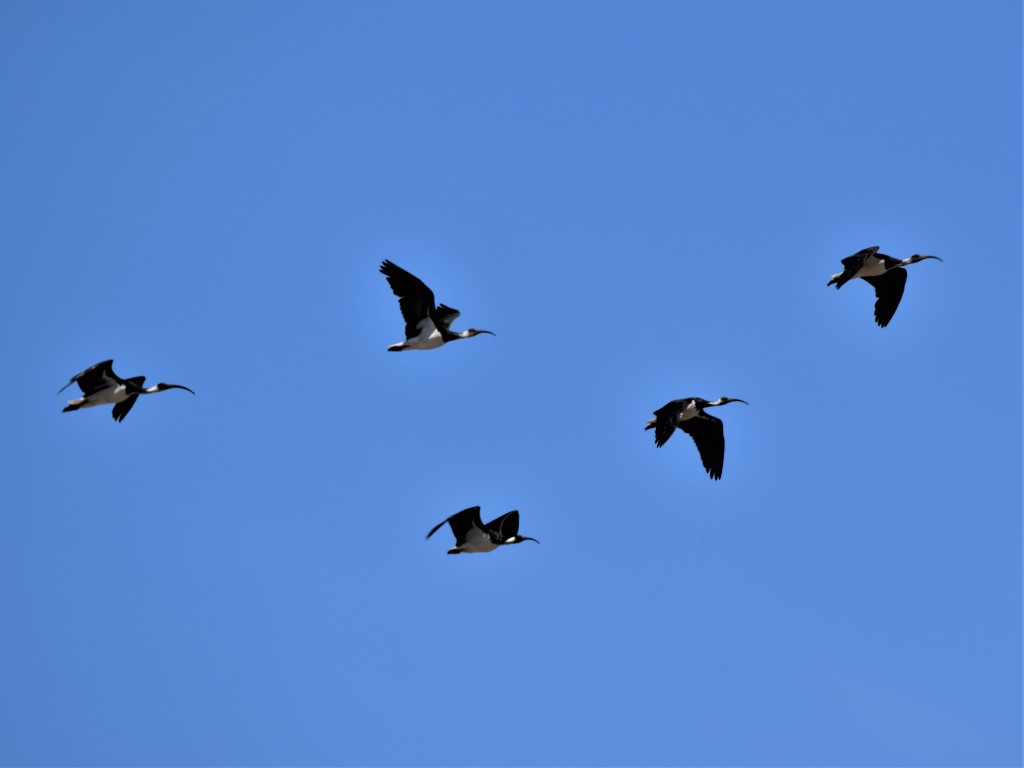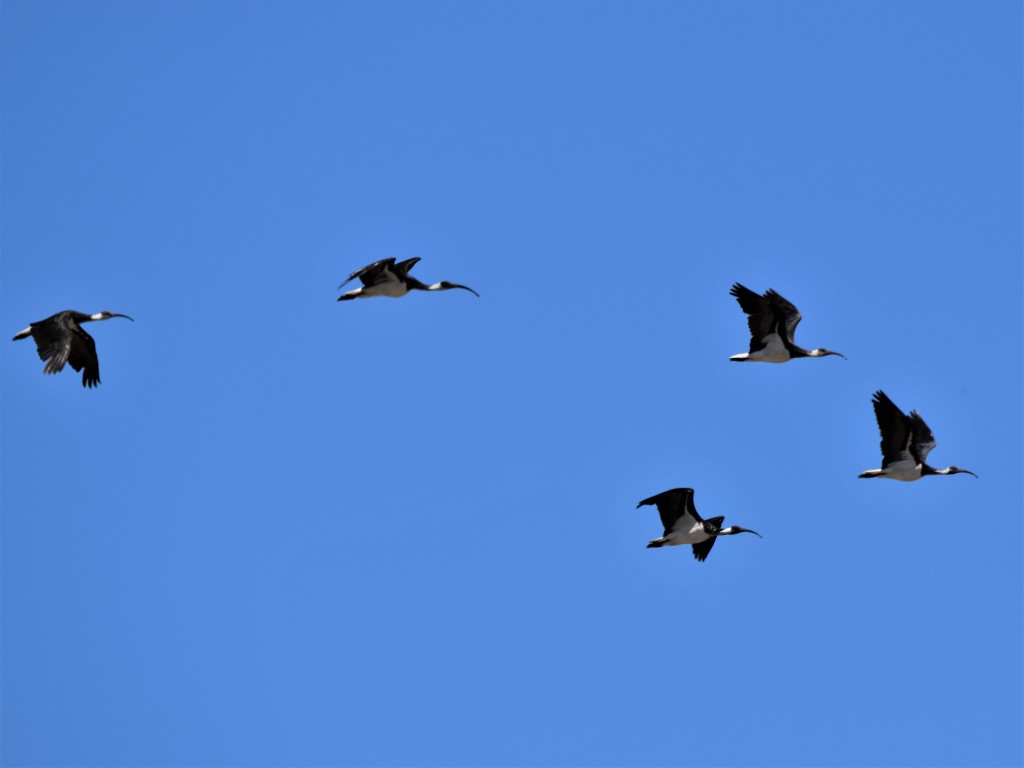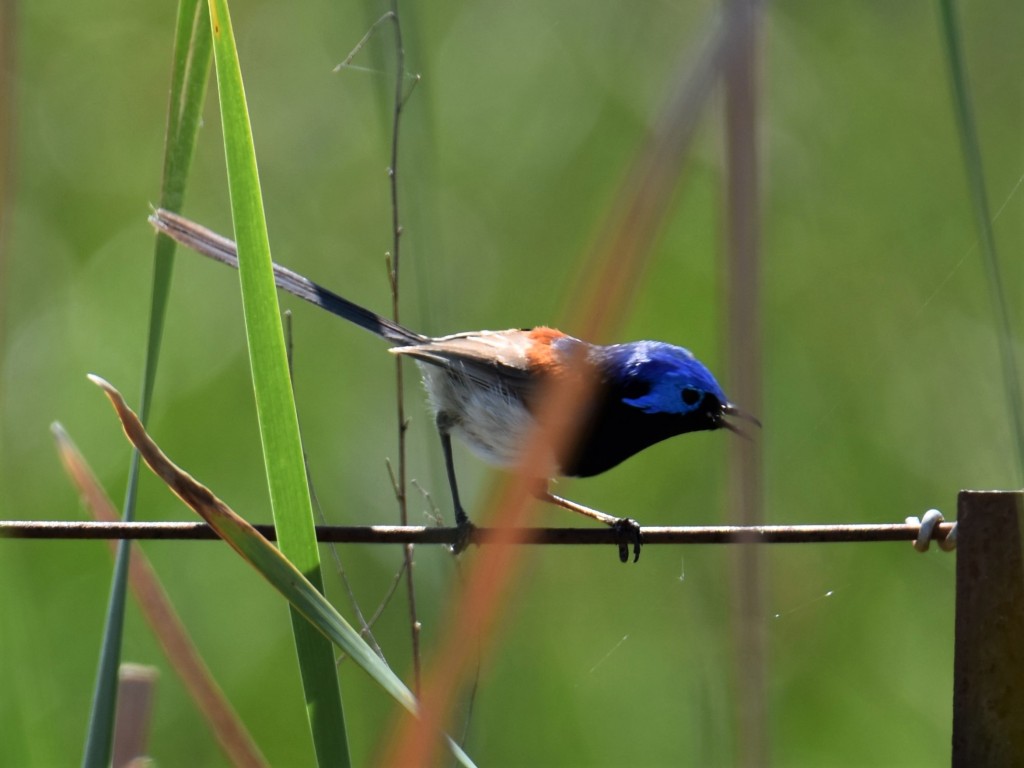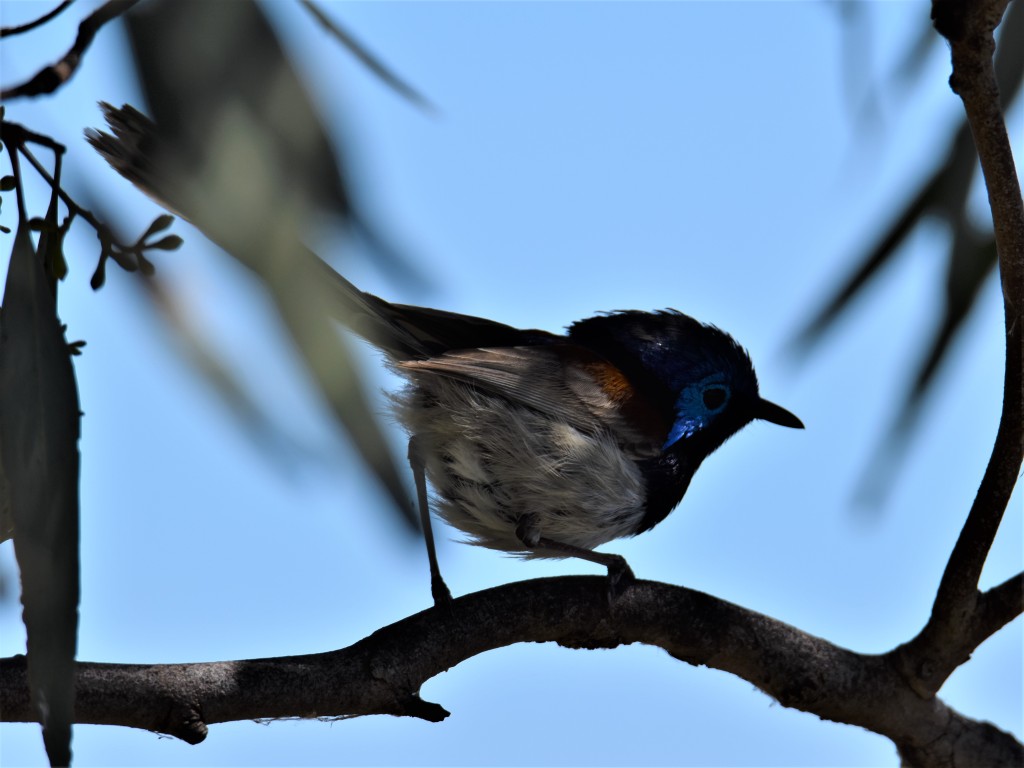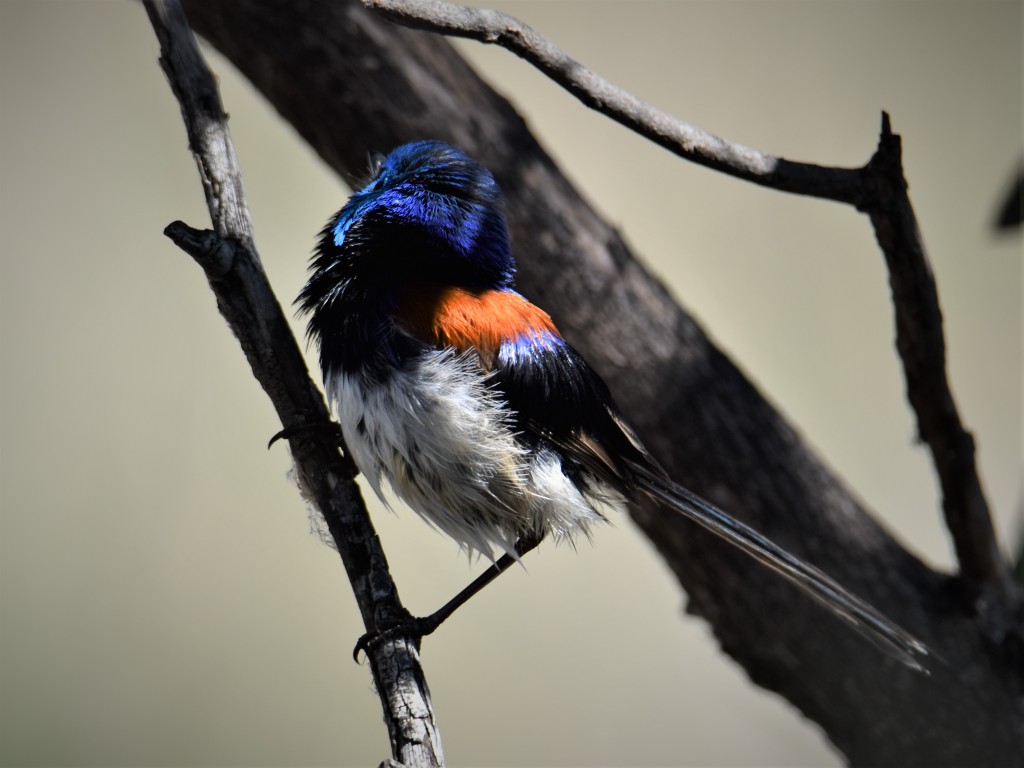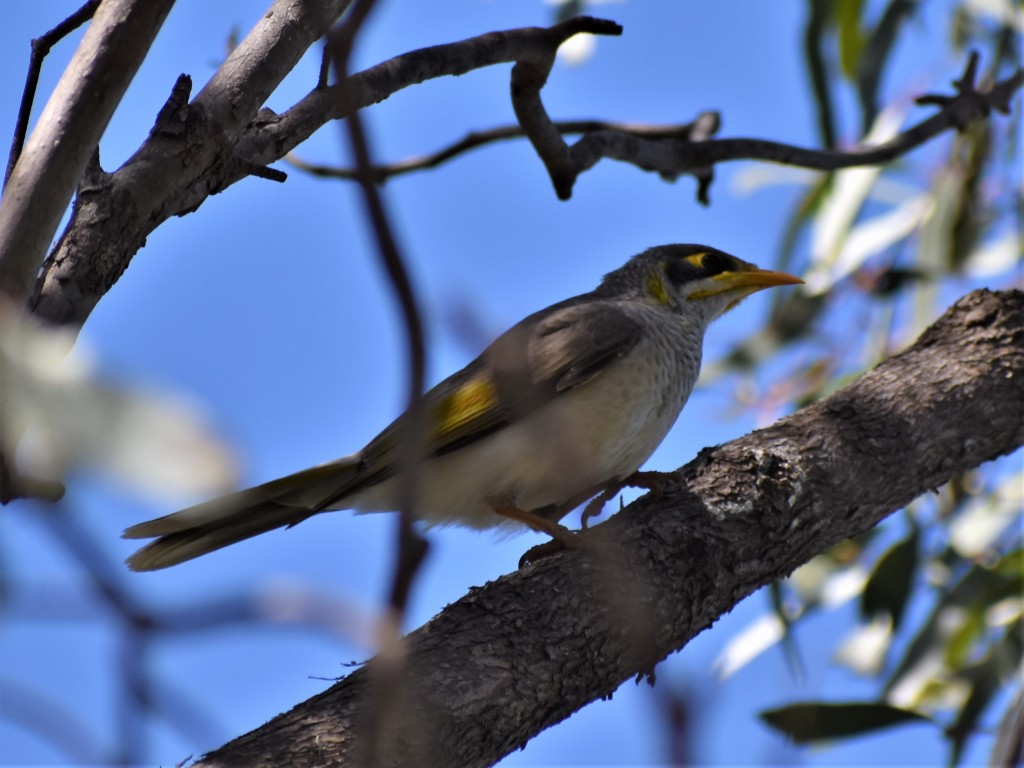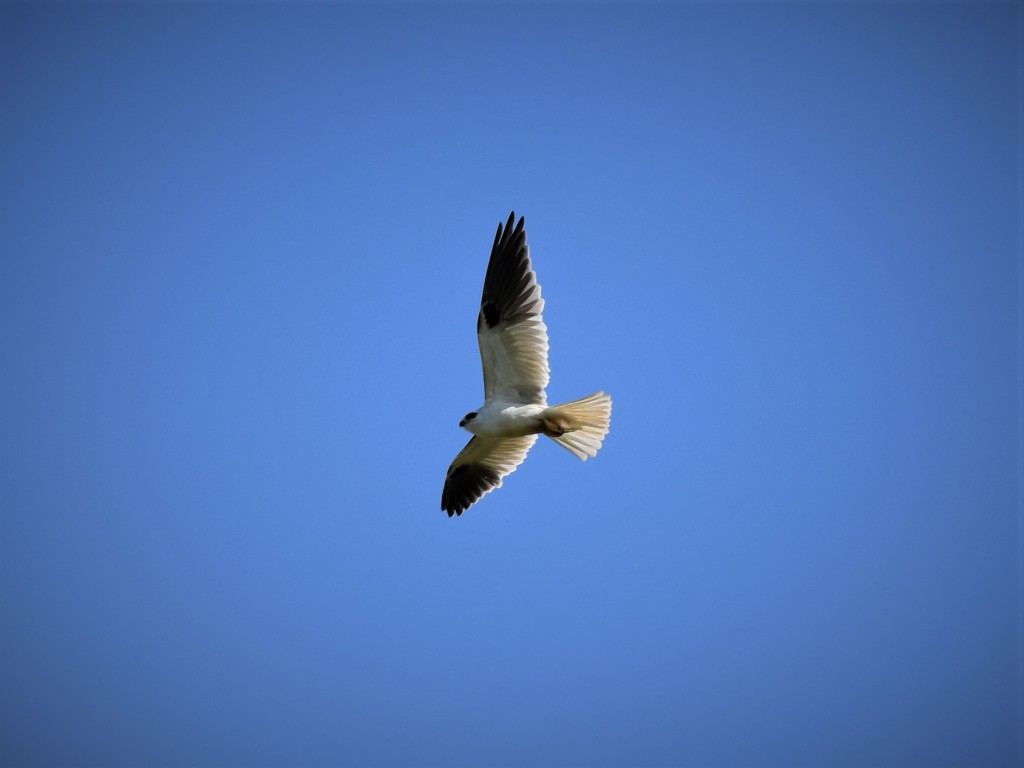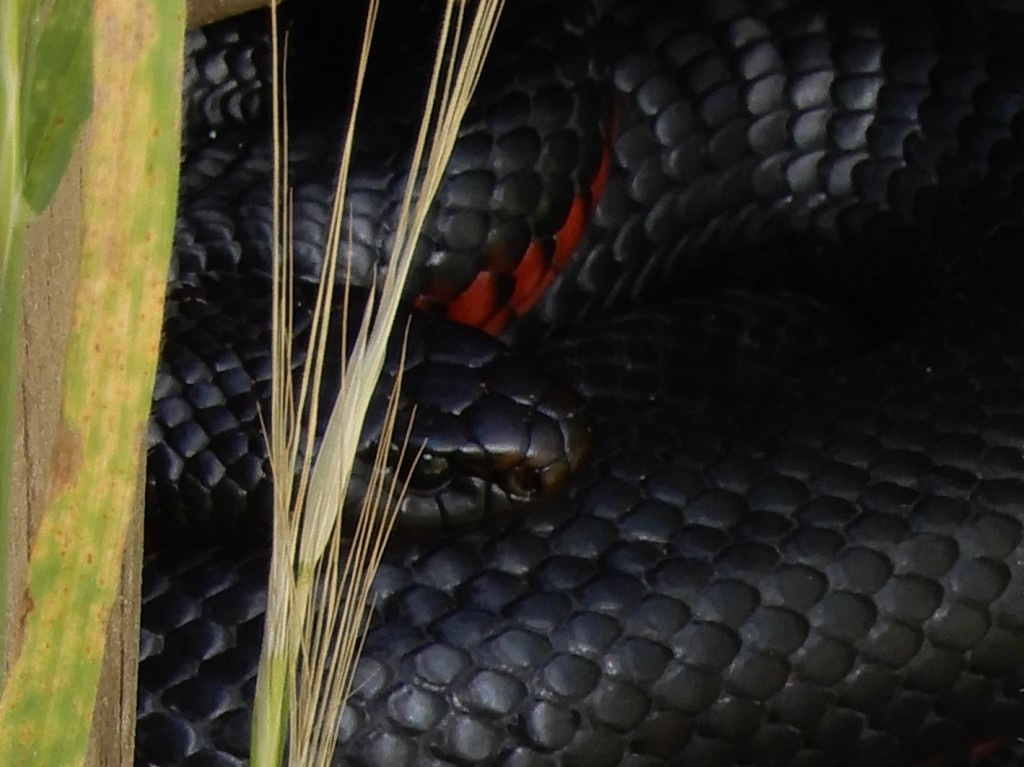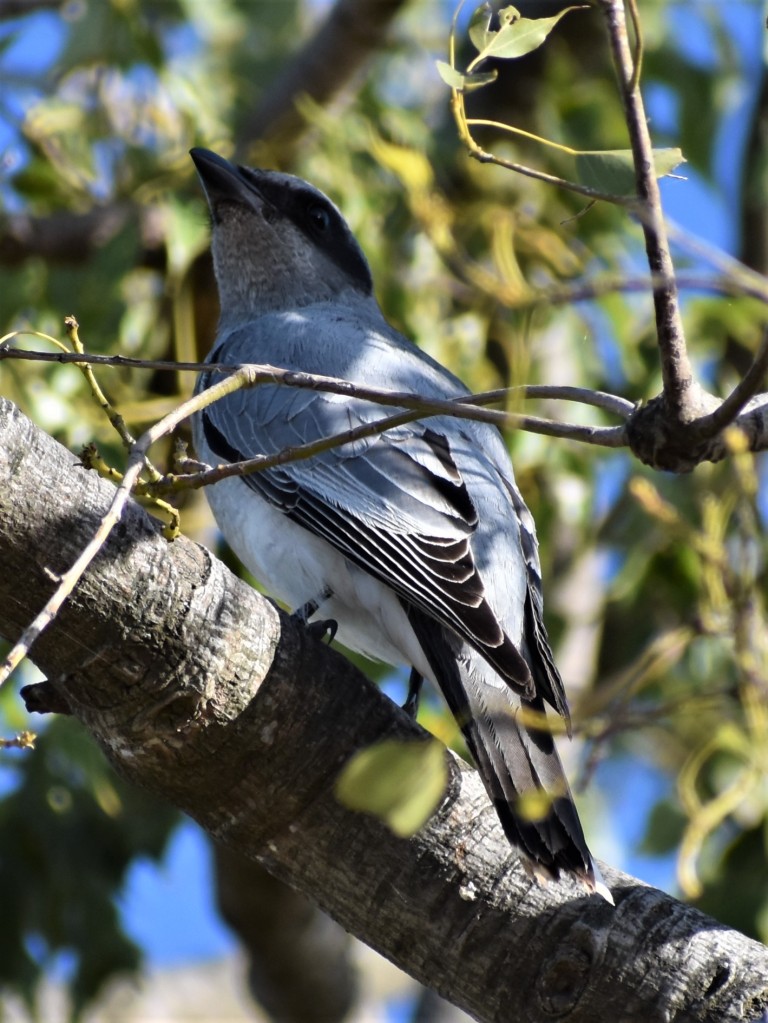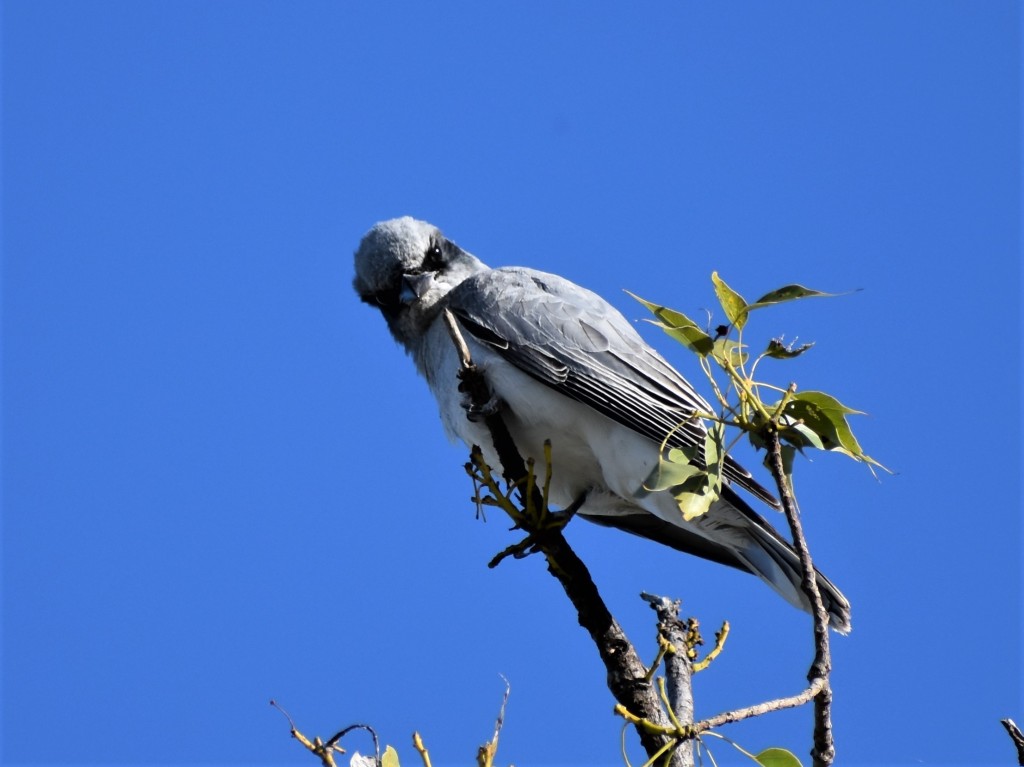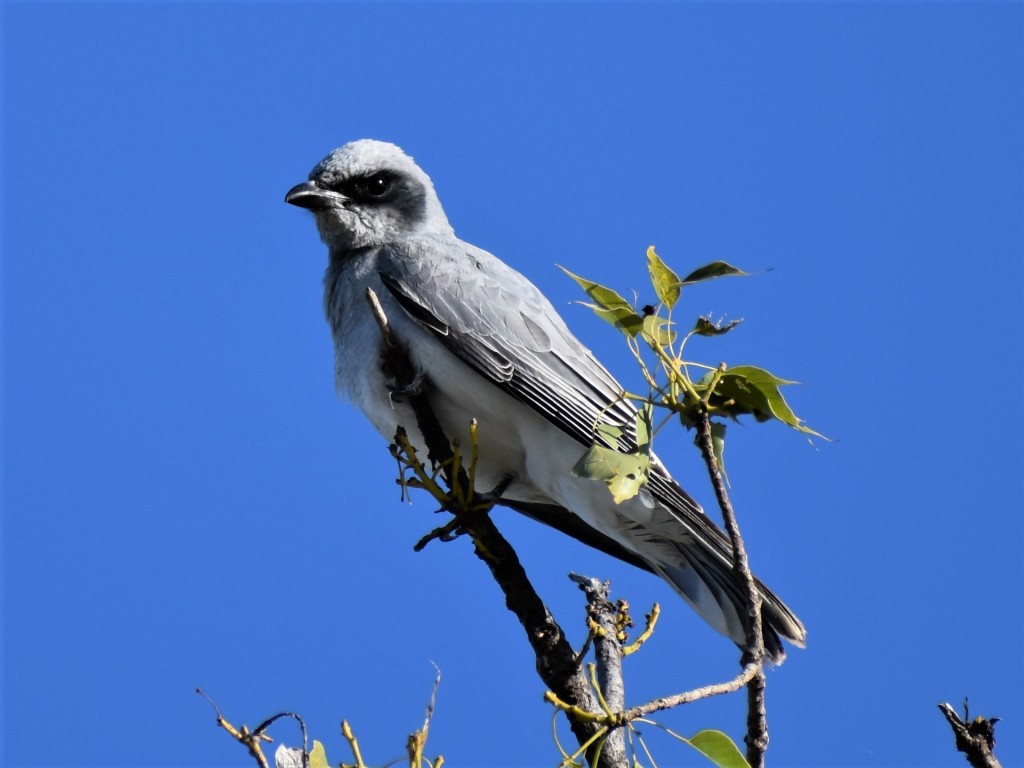On the fringes of Leeton, Fivebough and Tuckerbill Wetlands are Ramsar listed reserves protected under the convention as Wetlands of International Importance. By all reports, they are a bird-watching hot-spot. 86 species of water bird have been recorded there, 64 species have been recorded as breeding there. At the height of summer migration, upwards of 20,000 individual birds have regularly been counted.
So it was a bit frustrating that on our visit, we did not see many birds at all! Admittedly, we arrived late morning: we daresay that early morning and late afternoon probably makes for better viewing. And we heard a lot of birds that we could not see – the walls of reeds and rushes were so tall and so dense that there was very little chance of getting a lens on a bird.
For the first half an hour or so, all we really saw were kangaroos:
We did however get to see the Magpie Goose (Anseranas semipalmata), listed as Threatened in NSW, and which had to be re-introduced in Victoria and South Australia. It is easily identified by its lankiness and bulging cranial knob. It is the only member of the family Anserantidae, so stands apart from all other waterfowl.
A Golden-headed Cisticola (Cisticola exilis):
As well the common Australian White Ibis (Threskiornis molucca) in the next two pictures, we also spotted Straw-necked Ibises (Threskiornis spinicollis) in flight a few times (the pictures below). Whenever they alighted however, they were too far away for photography. We were also on the lookout for the Glossy Ibis (Plegadis falcinellus) which we had read is a frequent visitor to Fivebough – but to no avail.
Finally a male Variegated Fairy Wren (Malurus lamberti) obliged by sitting in the open.
Stopping at a raised viewing platform allowing a view of the wetlands over the tops of the tall reeds, we ironically got our best pics in the small, shady scrub beneath the viewing platform, when a male and female Variegated Fairy Wren chased each other through the shadows.
The Grey-crowned Babbler (Pomatostomus temporalis) is the largest of Australia’s Babblers, and is now listed as Endangered in Victoria. They will feed from the ground, but mainly glean insects from trees. They are the most arboreal of the Babblers, and can be hard to spot in foliage. Their almost incessant, low group chatter (babble, I guess) is usually the first indication they are nearby.
The Yellow-throated Miner (Manorina flavigula) has a much wider range than the Noisy Miner, and is therefore more common. But in NSW they occur only west of the ranges. So being from Sydney where every second bird we see is a Noisy Miner, Bramanda was disproportionately excited to see and photograph this slightly smaller and paler Yellow-throated member of the Genus.
A White-plumed Honeyeater (Ptilotula pencillata):
The Black-shouldered Kite (Elanus axillaris) can often been seen hovering in a near vertical position, as he drops onto prey feet first.
A juvenile Rufous Whistler (Pachycephala rufiventris) was conspicuous by its song:
Back at the car, we loaded our gear into the back very sedately, as a Red-bellied Black Snake (Pseudechis porphyriacus) had decided to curl up in the shadow of the car’s rear wheel.
We arrived back at our Leeton accommodation, and sat on a picnic blanket in the backyard, when a young Black-faced Cuckoo-shrike landed in a nearby treetop, and posed for as many photos as we wanted.











